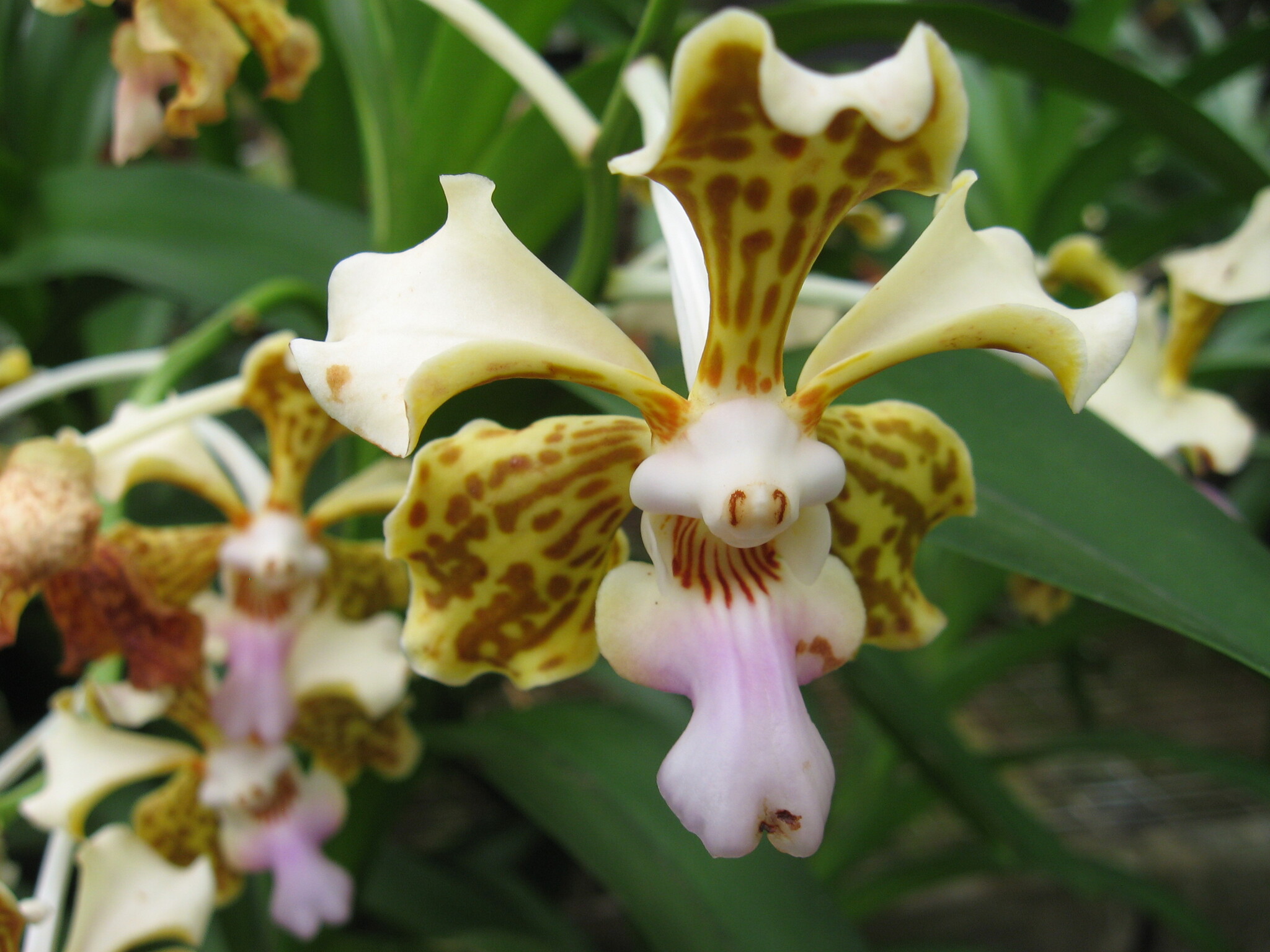
From a Sanskrit word for Vanda tessellata.
Epiphytic or epilithic herbs, monopodial. Stems scrambling to erect, simple or branched, long or short, lacking pseudobulbs, aerial roots often abundant. Leaves in 2 ranks, strap-shaped or cylindrical, sheathing at base. Inflorescences axillary racemes, erect or arching. Flowers resupinate, few-many, medium sized to large, variously coloured. Sepals and petals similar, or lateral sepals somewhat larger, often clawed, free, spreading. Labellum 3-lobed, side lobes erect, midlobe often notched or lobed, keeled, with a short spur at base. Column short, with or without a foot. Pollinia 2, deeply cleft.
About 35 species from India to SE Asia, Indonesia, New Guinea and Australia.
Sepals and petals similar, free, clawed, spreading; small spur at base of labellum.
Grove (1995), Motes (1997).
Source: (2005). Orchidaceae. In: . Horticultural Flora of South-eastern Australia. Volume 5. Flowering plants. Monocotyledons. The identification of garden and cultivated plants. University of New South Wales Press.
